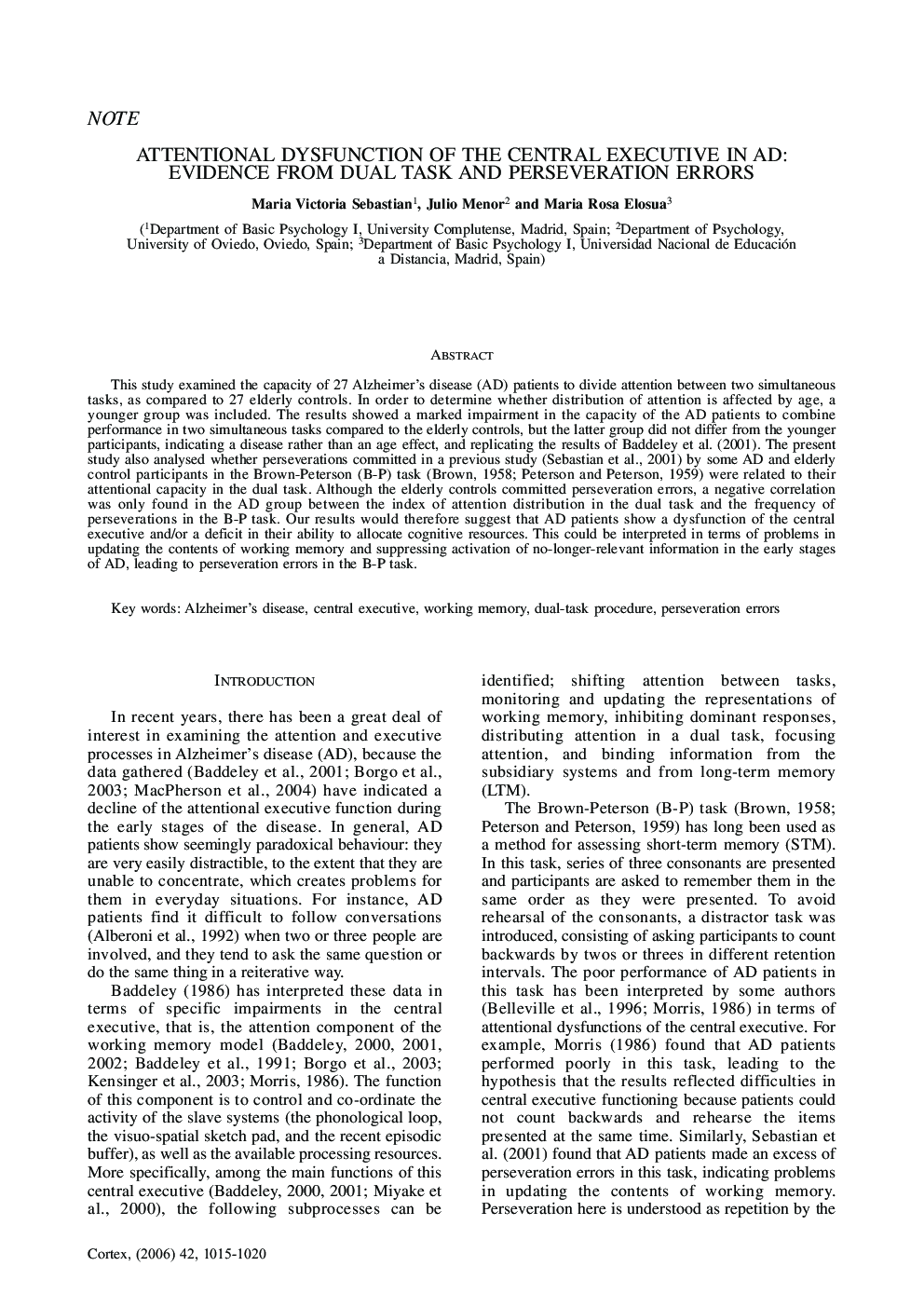| Article ID | Journal | Published Year | Pages | File Type |
|---|---|---|---|---|
| 943012 | Cortex | 2006 | 6 Pages |
This study examined the capacity of 27 Alzheimer's disease (AD) patients to divide attention between two simultaneous tasks, as compared to 27 elderly controls. In order to determine whether distribution of attention is affected by age, a younger group was included. The results showed a marked impairment in the capacity of the AD patients to combine performance in two simultaneous tasks compared to the elderly controls, but the latter group did not differ from the younger participants, indicating a disease rather than an age effect, and replicating the results of Baddeley et al. (2001). The present study also analysed whether perseverations committed in a previous study (Sebastian et al., 2001) by some AD and elderly control participants in the Brown-Peterson (B-P) task (Brown, 1958; Peterson and Peterson, 1959) were related to their attentional capacity in the dual task. Although the elderly controls committed perseveration errors, a negative correlation was only found in the AD group between the index of attention distribution in the dual task and the frequency of perseverations in the B-P task. Our results would therefore suggest that AD patients show a dysfunction of the central executive and/or a deficit in their ability to allocate cognitive resources. This could be interpreted in terms of problems in updating the contents of working memory and suppressing activation of no-longer-relevant information in the early stages of AD, leading to perseveration errors in the B-P task.
